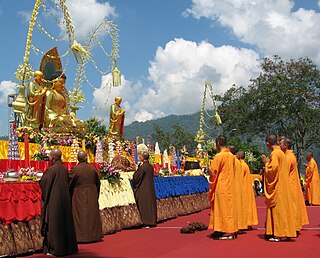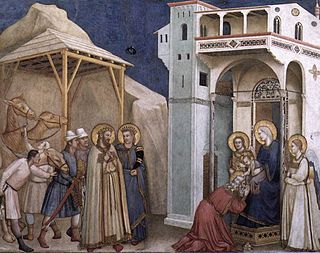
Ice Cream for Breakfast Day is an informal holiday celebrated on the first Saturday in February when some people deliberately eat ice cream for breakfast.

Ice Cream for Breakfast Day is an informal holiday celebrated on the first Saturday in February when some people deliberately eat ice cream for breakfast.
The holiday was invented on a snowy winter day in the 1960s by Florence Rappaport in Rochester, New York, [1] the mother of six children. It was her youngest two, Ruth (now Kristal) and Joe Rappaport, who inspired her on a cold and snowy February morning. To entertain them, she declared it to be Ice Cream For Breakfast Day. She explained, "It was cold and snowy and the kids were complaining that it was too cold to do anything. So I just said, 'Let's have ice cream for breakfast.'" [2] The next year, they reminded her of the day and a tradition began. The exact year of the first ICFBD is unrecorded, but it is speculated to be 1966, when a huge blizzard hit Rochester in late January, dumping several feet of snow on Rochester and shutting down schools. [3] When the siblings grew up, they held parties and introduced the tradition to friends while in college, and the tradition began to spread. [4]
The holiday began to spread across the world thanks to Rappaport's grandchildren, who have traveled extensively. Celebrations have been recorded in Nepal, Namibia, Germany, New Zealand, Chile, and Honduras. [5] Some are small family celebrations and others are larger parties. The holiday has even been celebrated in China since 2003 and was featured in the Chinese edition of Cosmopolitan magazine and local magazines in Hangzhou, China. [6]
Ice Cream for Breakfast Day enjoys particular popularity in Israel. Israel's Haaretz newspaper first reported on ICFBD in 2013 in Hebrew [7] and then in 2014 in English. [8] In 2020, The Jerusalem Post newspaper reported that some 100,000 people in Israel were expected to mark the celebration. [9]
Ice Cream For Breakfast Day is officially celebrated on the first Saturday of February. The website describes the holiday as only having three rules:
In recent years, several ice cream shops around the United States have started to use the day to raise money for charities, and to attract some cold weather customers. [11] [12] [13] [14]

Sukkot is a Torah-commanded holiday celebrated for seven days, beginning on the 15th day of the month of Tishrei. It is one of the Three Pilgrimage Festivals on which those Israelites who could were commanded to make a pilgrimage to the Temple in Jerusalem. In addition to its harvest roots, the holiday also holds spiritual importance with regard to its abandonment of materialism to focus on nationhood, spirituality, and hospitality, this principle underlying the construction of a temporary, almost nomadic, structure of a sukkah.
Shemini Atzeret is a Jewish holiday. It is celebrated on the 22nd day of the Hebrew month of Tishrei in the Land of Israel, and on the 22nd and 23rd outside the Land, usually coinciding with late September or early October. It directly follows the Jewish festival of Sukkot which is celebrated for seven days, and thus Shemini Atzeret is literally the eighth day. It is a separate—yet connected—holy day devoted to the spiritual aspects of the festival of Sukkot. Part of its duality as a holy day is that it is simultaneously considered to be both connected to Sukkot and also a separate festival in its own right.

Vesak, also known as Buddha Jayanti, Buddha Purnima, Buddha Day, is a holiday traditionally observed by Buddhists in South Asia and Southeast Asia, as well as Tibet and Mongolia. It is the most important Buddhist festival. The festival commemorates the birth, enlightenment (Nibbāna), and passing (Parinirvāna) of Gautama Buddha in Theravada, Tibetan Buddhism and Navayana.

Shrove Tuesday is the final day of Shrovetide, marking the end of pre-Lent. Lent begins the following day with Ash Wednesday. Shrove Tuesday is observed in many Christian countries through participating in confession and absolution, the ritual burning of the previous year's Holy Week palms, finalizing one's Lenten sacrifice, as well as eating pancakes and other sweets.

In the Gregorian calendar, New Year's Day is the first day of the calendar year, 1 January. Most solar calendars begin the year regularly at or near the northern winter solstice, while cultures and religions that observe a lunisolar or lunar calendar celebrate their Lunar New Year at less fixed points relative to the solar year.

In the Gregorian calendar, New Year's Eve, also known as Old Year's Day, is the evening or the entire day of the last day of the year, 31 December. In many countries, New Year's Eve is celebrated with dancing, eating, drinking, and watching or lighting fireworks. Some Christians attend a watchnight service. The celebrations generally go on past midnight into New Year's Day, 1 January.

The Twelve Days of Christmas, also known as the Twelve Days of Christmastide, are the festive Christian season celebrating the Nativity.

Danish cuisine originated from the peasant population's own local produce and was enhanced by cooking techniques developed in the late 19th century and the wider availability of goods during and after the Industrial Revolution. Open sandwiches, known as smørrebrød, which in their basic form are the usual fare for lunch, can be considered a national speciality when prepared and garnished with a variety of ingredients. Hot meals are typically prepared with meat or fish. Substantial meat and fish dishes includes flæskesteg and kogt torsk with mustard sauce and trimmings. Ground meats became widespread during the industrial revolution and traditional dishes that are still popular include frikadeller, karbonader and medisterpølse. Denmark is known for its Carlsberg and Tuborg beers and for its akvavit and bitters, but amongst the Danes themselves imported wine has gained steadily in popularity since the 1960s.

The observance of Christmas around the world varies by country. The day of Christmas, and in some cases the day before and the day after, are recognized by many national governments and cultures worldwide, including in areas where Christianity is a minority religion. In some non-Christian areas, periods of former colonial rule introduced the celebration ; in others, Christian minorities or foreign cultural influences have led populations to observe the holiday.

Sufganiyah is a round jelly doughnut eaten in Israel and around the world on the Jewish festival of Hanukkah. The doughnut is deep-fried, injected with jam or custard, and then topped with powdered sugar. The doughnut recipe originated in Europe in the 16th century, and by the 19th century was known as a Berliner in Germany. Polish Jews, who called it a ponchik, fried the doughnut in schmaltz rather than lard due to kashrut laws. The ponchik was brought to Israel by Polish Jewish immigrants, where it was renamed the sufganiyah based on the Talmud's description of a "spongy dough".

Christmas in July, also known as Christmas in Summer or Christmas in Winter, is a second Christmas celebration held on the 25th of July that falls outside of the traditional period of Christmastide. It is centered around Christmas-themed activities and entertainment, including small gatherings, seasonal entertainment, and shopping. July Christmas celebrations typically accommodate for those living in the Southern hemisphere, in which they undergo their annual winter, although the main goal of Christmas in July is getting the public in the "Christmas spirit" during the summer season in the Northern hemisphere.

Perry's Ice Cream is an ice cream manufacturer located in Akron, New York. Perry's sells and distributes primarily to New York, Western Pennsylvania, New England, and Northeast Ohio.

Defender of the Fatherland Day is a holiday observed in Russia, Turkmenistan, Belarus, Kyrgyzstan, Kazakhstan and Tajikistan. It is celebrated on 23 February, except in Kazakhstan, where it is celebrated on 7 May. Ukraine abolished the holiday starting 1992 and, after the Revolution of Dignity, has instated the somewhat similar Defender of Ukraine Day on 1 October.

Novy God is the Russian phrase for "New Year", and also designates the Russian New Year's Eve and New Year's Day celebration.

Saint Sylvester's Day, also known as Silvester or the Feast of Saint Sylvester, is the day of the feast of Pope Sylvester I, a saint who served as Pope from 314 to 335. Medieval legend made him responsible for the conversion of emperor Constantine. Among the Western churches, the feast day is held on the anniversary of Saint Sylvester's death, 31 December, a date that, since the adoption of the Gregorian calendar, has coincided with New Year's Eve. For these Christian denominations, Saint Sylvester's Day liturgically marks the seventh day of Christmastide. Eastern churches celebrate Sylvester's feast on a different day from the Western churches, i.e. on 2 January. Saint Sylvester's Day celebrations are marked by church attendance at a Watchnight Mass that is often held around midnight, as well as fireworks, partying, and feasting.
Lists of holidays by various categorizations.

Christmas is celebrated throughout December and traditionally until St. Knut's Day on January 13. The main celebration and the exchange of gifts in many families takes place on Christmas Eve, December 24. The Feast of St. Lucy, a high point in the Swedish Christmas season, is celebrated during Advent, on December 13.